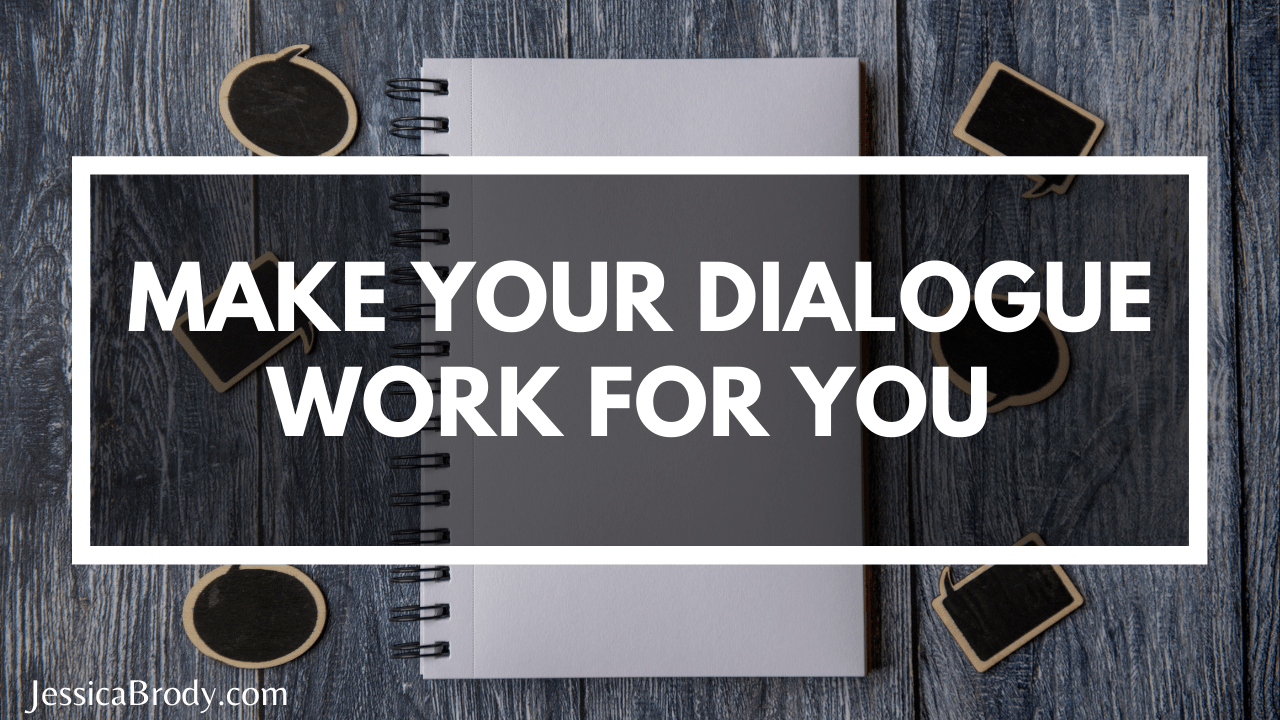Make Your Dialogue Work For You

Dialogue can make or break a story. Strong dialogue can lift your story to new heights, while weak dialogue can turn a reader off.
The key to writing strong dialogue is to think of it as another extension of your character development. Your dialogue is just another way you reveal your characters to the reader. What a character says says a lot about them! In other words, we can make dialogue do some of our characterization work for us.
When we start to think of dialogue in this way, it makes our dialogue feel more purposeful and impactful and opens our creative minds up to ways to write dialogue in an engaging, revealing way.
Here’s an example of dialogue between two friends that does absolutely nothing to develop or reveal the characters:
Dialogue that Doesn’t Do Any Work:
“What are you wearing today?” asked Lucy.
“I don’t know.” replied Jen.
“What about your blue dress?”
Jen shrugged. “I guess that could work.”
What did we learn from this? Apart from the fact that Jen has a blue dress. This is an example of dialogue that doesn’t do any work. In other words, lazy dialogue.
Now, let’s look at this dialogue written in a slightly different way.
Dialogue Put to Work:
“Is that really what you’re going to wear today?” asked Lucy.
“I don’t know,” replied Jen. “Maybe. Why? Is it bad? Too conservative? Not conservative enough. This is hopeless!”
“Calm down. Breathe. Just put on the chambray shift dress. It goes with your eyes.”
“Yes. Right. That will work.”
Notice how, without even adding any more description or changing the dialogue tags (the phrases that identify who is speaking), you suddenly know a lot more about this friendship. Lucy is the calmer, take-charge one who knows about fashion. While Lucy tends to overreact and overthink.
This kind of dialogue is called characterizing dialogue. It reveals things about your character just through what they say. By paying attention to what your characters say and how you can take a blah, seemingly-nothing-happens conversation and suddenly turn it into working dialogue. Or, even if you do have dialogue that conveys something important that’s happening, you can make your dialogue do double work by not only conveying what’s happening, but by revealing character as well.
The best way to practice characterizing your dialogue is to write dialogue without using any tags or descriptions of how the characters are speaking, letting the dialogue stand all on its own.
Which means instead of revealing a character’s anger by writing:
“Stop it!” she screamed, clenching her fists and breathing so hard, I was certain steam would start coming out of her nose.
You would let the dialogue do all the work by writing something like:
“Stop it! Just stop. I can’t listen to this anymore. I just….can’t. Please. Go.”

Your Challenge:
So here’s my challenge to you: take a scene of dialogue you’re working on (either writing or revising) and remove all the dialogue tags and descriptions (your scene should start to look like a play, except without the character names written). See if the dialogue stands on its own and speaks for itself. Is the meaning or sentiment of the scene still clear? Can you tell who’s talking without the tags? If not, try tweaking the dialogue instead of adding tags or descriptions (which we, writers, can sometimes use as a crutch to avoid doing more creative dialogue work.)
This challenge will force you to rely on dialogue to do some of your characterizing work and help you practice writing more revealing, engaging dialogue that serves multiple functions in your story.
Of course, you can always go back in later and add the tags and description. But you’ll probably find that you don’t have to add quite as many as you thought you would, because you’ve written the dialogue to speak for itself!
Filed under: Tips for Writers Writing Mastery Tagged with: character dialogue how to write characters novel revision revising revising hacks Revision Kickstart (LMAP) revisions writing mastery writing tips